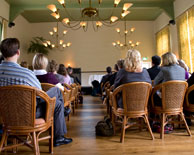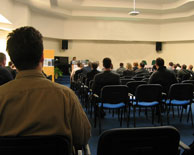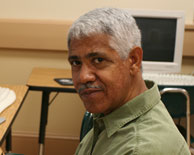United Nations
5/1/25
Overview
Formed in 1945 in the immediate aftermath of a second world war, the United Nations was intended (in the words of its founding Charter) “to save succeeding generations from the scourge of war”. Join Active Minds as we examine the origins and development of the U.N. as well as its current and future role in the world.
Key Lecture Points
- Arising from the devastation of WWII, the United Nations was created to “save succeeding generations from the scourge of war.” With 193 member nations, the UN General Assembly provides a global forum for debate on issues of international concern, but the real power lies in the Security Council, dominated by the veto wielding Permanent Five members: the US, the UK, France, Russia and China. Critics claim the UN cannot survive without reforming these members’ outsized roles.
- The origins of the UN can be traced back to the Concert of Europe, the League of Nations and high level WWII Allied conferences such as those in Tehran, Iran, Dumbarton Oaks in Washington, DC, and Yalta in the Crimea. In 1945, representatives of 50 countries met in San Francisco and adopted the United Nations Charter, which laid out the structure for a new world body. The first meeting of the United Nations was held in London in January 1946 with 51 countries participating. In 1952 the UN moved into its present headquarters in New York City.
- Today, the ninth Secretary General is Antonio Guterres from Portugal whose second five-year term began in January 2022. Issues he has faced include the aftermath of the Syrian civil war and refugee crisis, Russia’s war in Ukraine, a global pandemic, and repeated threats of withdrawal by U.S. President Donald Trump.
- Supporters of the UN call it a success because there has not been another world war despite the tensions of the Cold War and other serious conflicts. It gives small nations a voice on the global stage, saves the lives of millions through its humanitarian programs, restores stability through its peacekeeping missions and brings attention to important issues like climate change and manages public health crises. Critics call it a bloated, unwieldly, ineffective bureaucracy that costs too much money. The US typically provides 22% of the UN’s operating budget, a contribution that some say is more than its fair share.
Discussion Questions
- How and why did the UN developed from the League of Nations to the organization it is today?
- How is the UN structured and how do the different parts of the system operate?
- What are three major crises before the UN today and how does each one affect the US?
- Do you think the UN is a success or failure? Why?
- Do you think the Security Council should be reformed? Why or why not?
More to Explore
- Info on the 17 Sustainable Development Goals Click here
- Info on current UN peacekeeping missions Click here
- UN Press Reports Click here
Books for Further Reading
- Fasulo, Linda. An Insider’s Guide to the UN. Fourth Edition. Yale University Press, 2021. 352 pages. Written by a longtime reporter on UN affairs, this book is a guide to the complex working of the UN and its ever-expanding missions. According to Fasulo, this guide is "for those who want to know more, who ask how the proceedings are conceived, prepared, and paid for, and about their chances for a lasting impact."
- Graham, Erin R. Transforming International Institutions: How Money Quietly Sidelined Multilateralism at The United Nations. Oxford University Press, 2023. 224 pages. “Illuminates how a slow, quiet, subterranean process can produce big, radical change in international institutions and organizations. It highlights how early participants in a process who do not foresee the transformative potential of their acts but nonetheless enable subsequent actors to push change in new directions to profound effect.”
- UNESCO, World Heritage Sites: A Complete Guide to 1,073 UNESCO World Heritage Sites. Firefly Books, 2018. 960 pages. This book provides a photographic guide to UNESCO world heritage sites.






Copyright © 2004-2025 Active Minds®. All rights reserved.
